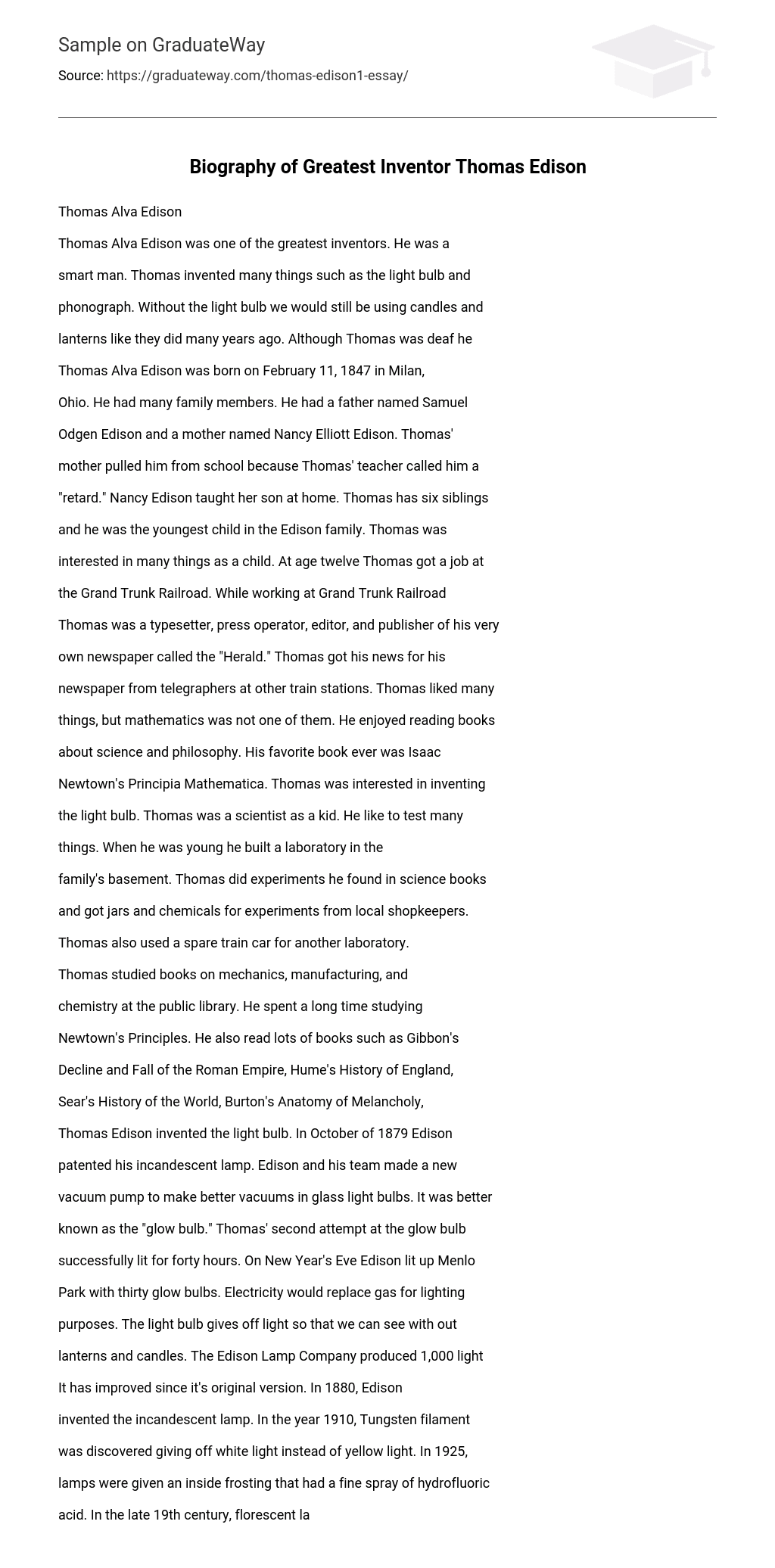Thomas Alva Edison, a celebrated inventor, was born in Milan, Ohio on February 11, 1847. Despite his deafness, he displayed remarkable intelligence and created revolutionary inventions like the light bulb and phonograph. The invention of the light bulb revolutionized our lifestyle by rendering candles and lanterns obsolete. Thomas’s parents were Samuel Odgen Edison and Nancy Elliott Edison.
Thomas Edison’s mother decided to remove him from school and educate him at home after his teacher insulted him by calling him a “retard.” Despite being the youngest of six siblings in the Edison family, Thomas showed a strong curiosity in various subjects. At twelve years old, he got a job at the Grand Trunk Railroad where he took on multiple roles such as typesetter, press operator, editor, and publisher for his own newspaper called “Herald.” To gather news for his publication, Thomas relied on telegraphers at other train depots. While mathematics didn’t particularly interest him, Thomas eagerly delved into literature about science and philosophy. It is possible that Isaac Newton’s Principia Mathematica held a special place among his beloved books.
Thomas had a fascination with inventing the light bulb and a deep love for science as a child. He conducted experiments and built a laboratory in his family’s basement, using jars and chemicals he obtained from local shopkeepers based on instructions found in science books. Additionally, he set up another workspace in an available train car.
Thomas spent extensive time studying mechanics, manufacturing, and chemistry at the public library. He immersed himself in Newtown’s Principles and explored various other literary works including Gibbon’s Decline and Fall of the Roman Empire, Hume’s History of England, Sear’s History of the World, and Burton’s Anatomy of Melancholy.
In the end, it was Thomas Edison who successfully invented the light bulb.
In October of 1879, Thomas Edison patented his incandescent lamp, also known as the “glow bulb”. His team developed a new vacuum pump to enhance the vacuum inside glass light bulbs. On his second attempt, Edison successfully illuminated the glow bulb for forty hours.
On New Year’s Eve, thirty glow bulbs were used by Edison to light up Menlo Park, marking the beginning of electricity replacing gas for lighting purposes. The invention of the light bulb has made lanterns and candles obsolete.
The technology behind light bulbs improved as the Edison Lamp Company produced 1,000 units. By 1880, an improved version called the incandescent lamp was introduced by Edison.
In 1910, a discovery was made: Tungsten filament emitted white light instead of its previous yellow light. Later in 1925, lamps received an internal frosting treatment using a fine spray of hydrofluoric acid. Additionally, in the late 19th century, the invention of fluorescent lamps occurred. These lamps consist of tubes filled with low-pressure neon gas.
Thomas Edison revolutionized modern society with his numerous inventions, and the light bulb is undoubtedly one of his most significant contributions. Its crucial role lies in providing illumination, as it enables visibility in darkness which would otherwise be challenging. Without light bulbs, we would be deprived of the opportunity to partake in night ball games and appreciate dazzling light shows.
Reference
- “Edison, Thomas.” Compton’s Encylopedia. 1990 ed. vol. 7, p.72-76
- Ellis, Keith. Thomas Edison, Genius of Electricity. Great Britain: Priory Press Limited, 1974
- Parker, Steve. Thomas Edison and Electricity. Great Britain: Belitha Press Limited, 1992





